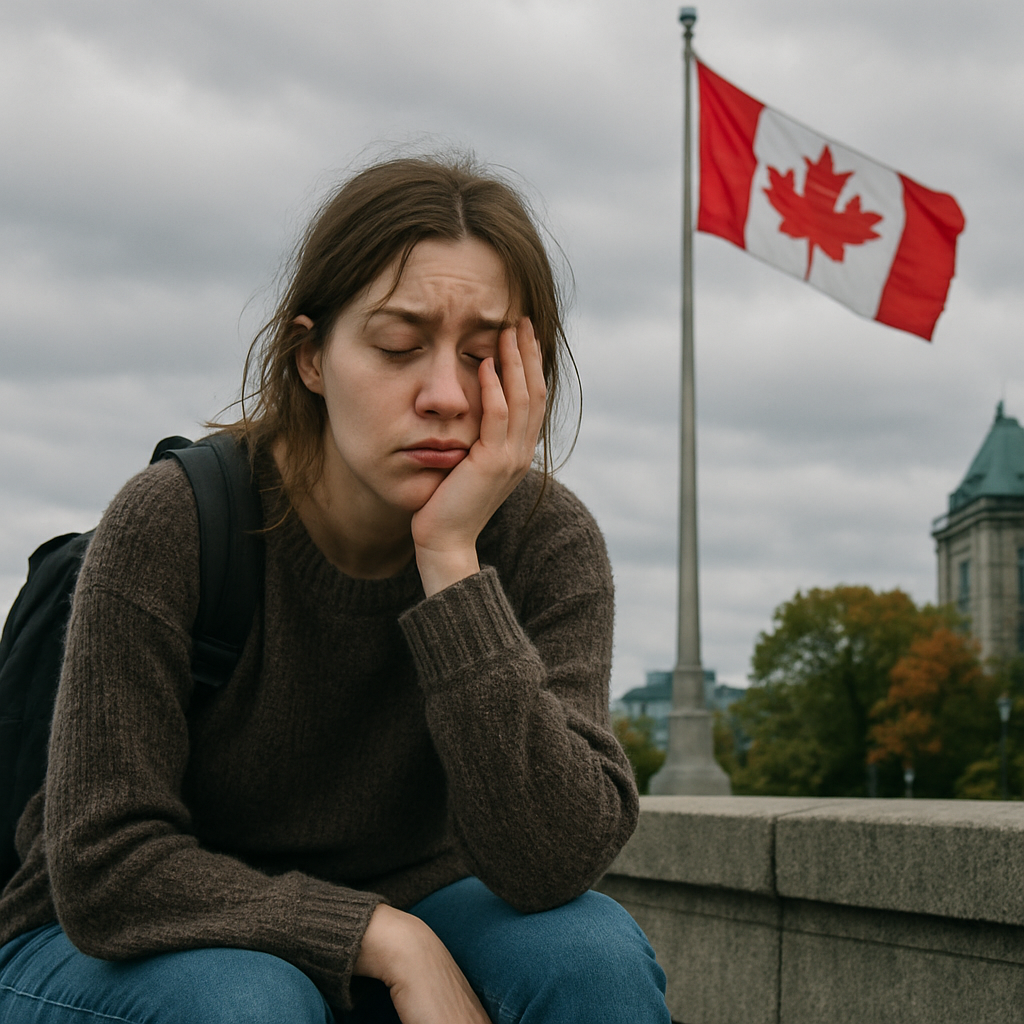When The Canberra Times reported in February 2022 that Stuart Kennedy woke up before his parents one morning in 2019, they highlighted something extraordinary: he made his own breakfast. For most teenagers, this would be unremarkable. But as the Times article revealed, for Stuart, it was nothing short of miraculous.
The story of Stuart Kennedy, from Canberra, Australia, was covered in The Canberra Times in February 2022 in an article titled: Stuart Kennedy overcame a rare sleep disorder to get a place at university It’s important for us to talk about Stuart Kennedy’s journey with idiopathic hypersomnia and Flumazenil, not only because it is one of resilience, perseverance, and hope, but it also stands out from other cases. Unlike some patients who report an immediate and radical awakening after taking Flumazenil, Stuart experienced a more gradual recovery. At first, the medication seemed to have no effect, but slowly and steadily, he emerged from hypersomnolence.
This case provides valuable insights into how Flumazenil may need to be titrated and how different patients may respond at varying rates. The improvements might be subtle rather than an immediate lightbulb moment. Some individuals may not even realize the medication is working until, one day, they wake up before everyone else, free from brain fog and excessive daytime sleepiness, ready to embrace life fully awake.
Stuart faced years of extreme fatigue, lost education, and an uncertain future. Yet, through groundbreaking treatment with Flumazenil and unwavering support, he overcame these obstacles to earn a place at the University of Canberra.
His journey is not only inspirational but also sheds light on the importance of sleep health and medical advancements. His gradual awakening reminds us that sometimes, medical breakthroughs don’t announce themselves with dramatic flair but rather with the quiet normalcy of a teenager making his own breakfast.
The Onset of a Rare Sleep Disorder
In 2016, when Stuart was in Year 7 at Canberra Grammar School, he contracted a virus that was expected to subside within weeks. However, instead of recovering, Stuart’s health deteriorated. He began sleeping excessively (up to 16 to 18 hours a day) despite a full night’s rest.
By the start of the 2017 school year, his condition worsened. His parents, Anne and Neil Kennedy, struggled to wake him each morning. His daily routine became a cycle of brief wakefulness followed by overwhelming exhaustion. Brain fog, muscle atrophy, and extreme lethargy took over, making even basic activities challenging.
The Diagnosis: Idiopathic Hypersomnia
After extensive medical consultations, Stuart underwent a sleep study at the Canberra Sleep Clinic, where he was diagnosed with idiopathic hypersomnia: a condition characterized by excessive daytime sleepiness without a known cause. A second study in Sydney confirmed the diagnosis.
Finding an effective treatment proved to be a complex, trial-and-error process. While medications like Ritalin and Concerta provided temporary relief, they were not long-term solutions. As a result, Stuart missed nearly three years of school (Years 8-10), significantly impacting his academic progress.
Searching for a Cure: A Father’s Determination
Neil Kennedy refused to accept that nothing more could be done. His research led him to Emory University Sleep Clinic in Atlanta, Georgia, where Dr. David Rye suggested Stuart try Flumazenil, a drug typically used to counteract sedative overdoses but showing promise in treating idiopathic hypersomnia.
With special permission, Canberra Sleep Clinic director Dr. Stuart Miller imported Flumazenil in powder form, which was then crafted into lozenges by a chemist in Adelaide.
Initially, Flumazenil seemed to have little effect, leaving Stuart and his family uncertain. However, after several days, something changed. One morning, Stuart woke up without the usual sluggishness. “I didn’t feel lethargic, sluggish. The headache was still there, but the brain fog was gone. I felt somewhat normal again,” he recalled.
On the fifth day, a profound transformation occurred: Stuart awoke before his parents, something he hadn’t done in years. Instead of the usual struggle to rise from bed, he felt an unfamiliar sense of clarity and energy. For the first time in what felt like an eternity, he didn’t immediately return to sleep. He ventured into the kitchen, made himself breakfast unprompted, and even tidied up around the house.
The biggest surprise came when his parents found him outside, tossing a ball to their old English Sheepdog. It was a simple act, yet one that signified a remarkable shift. The boy who had once needed assistance to even stand was now engaging with the world again. It was a moment of pure joy and disbelief, a glimpse of the life they feared had been lost forever.
His father, Neil, was overcome with emotion when Stuart turned to him and said, “Dad, I can think. No brain fog. I’m not tired.” After witnessing his son spend over two years confined to bed, unable to move without assistance, Neil broke down in tears. “It was like getting our son back after losing him for so long,” he said.
Rebuilding a Life: Returning to Education
Stuart’s gradual recovery allowed him to return to school part-time in Year 10. Specialists advised that changing his environment might help him re-establish a structured routine, leading to his enrollment in Canberra Grammar’s boarding house.
The transition was challenging, but with the support of teachers, learning assistants, and peers, Stuart began making academic progress. Initially earning Cs and Ds, he steadily improved his rankings, particularly in software design, where he advanced from 11th place to 6th in his class.
Achieving the Ultimate Goal: University Acceptance
Despite missing years of foundational education, Stuart’s relentless effort paid off. Through Canberra Grammar’s school recommendation scheme, he received an unconditional offer to study software engineering at the University of Canberra.
For Stuart, this achievement was more than just an academic milestone, it was proof that he had reclaimed his future.
Raising Awareness About Central Disorders of Hypersomnolence
Stuart’s story highlights the need for increased awareness and early diagnosis of sleep disorders. A 2019 parliamentary inquiry found that one in five Australians suffer from a major sleep disorder, yet many cases go undiagnosed.
Dr. Miller emphasizes the importance of recognizing excessive sleep as a warning sign: “Teenagers sleeping more than 10 hours regularly should be assessed for potential sleep disorders.” Early intervention, as seen in Stuart’s case, can change lives.
A Beacon of Light
Stuart Kennedy’s journey from being bedridden to a university student is nothing short of extraordinary. His perseverance, the dedication of his parents, and the groundbreaking treatment he received with Flumazenil have given him a new lease on life.
We are incredibly grateful to Stuart for sharing his story with the worlds and for having the courage to speak openly with The Canberra Times. His willingness to shed light on his journey offers hope to others facing similar struggles with idiopathic hypersomnia and other sleep disorders.
For those still searching for answers, Stuart’s experience is a powerful reminder that progress may come slowly, but it is possible. Whether through emerging treatments like Flumazenil or ongoing medical advancements, there is hope for those battling excessive sleepiness and fatigue. His story is proof that, even in the darkest times, perseverance and the right support can lead to a brighter future: one where waking up no longer feels impossible.
FAQs
1. What is idiopathic hypersomnia (IH)?
Idiopathic hypersomnia (IH) is a neurological sleep disorder categorized under central disorders of hypersomnolence. It is characterized by excessive daytime sleepiness (EDS), extreme fatigue, and difficulty waking up, despite long or seemingly adequate sleep durations. Unlike narcolepsy, IH does not typically involve sudden muscle weakness (cataplexy) or REM sleep abnormalities.
2. How is idiopathic hypersomnia diagnosed?
Idiopathic hypersomnia is diagnosed through a combination of clinical evaluation, sleep history, and specialized sleep studies. A doctor may order a Multiple Sleep Latency Test (MSLT) to measure sleep latency (the time it takes to fall asleep) and rule out other disorders like narcolepsy. A polysomnography (overnight sleep study) is often required to rule out sleep apnea and other sleep disorders.
3. What is the difference between idiopathic hypersomnia and narcolepsy?
Idiopathic hypersomnia and narcolepsy are both central disorders of hypersomnolence, but they differ in key ways. Narcolepsy (especially Type 1) includes sudden muscle weakness (cataplexy) and can involve sleep paralysis and hallucinations. Type 2 narcolepsy (narcolepsy without cataplexy) may be harder to distinguish from IH, but narcolepsy patients typically enter REM sleep abnormally fast, which can be detected in an MSLT. IH patients experience prolonged sleep episodes and severe daytime sleepiness without sudden sleep attacks.
4. What treatments are available for idiopathic hypersomnia?
There is no definitive cure for idiopathic hypersomnia, but treatment focuses on managing symptoms. Common prescriptions include stimulant medications such as modafinil, armodafinil, and methylphenidate. Some patients respond to sodium oxybate, while others have found relief with Flumazenil, an experimental treatment for GABA-related hypersomnia. Lifestyle modifications, structured sleep routines, and caffeine use may provide additional support.
5. How does Flumazenil help treat idiopathic hypersomnia?
Flumazenil is typically used as an antidote for benzodiazepine overdoses, but research has shown it may counteract excessive sleepiness in patients with GABA-related hypersomnia. Unlike stimulants, Flumazenil works by modulating GABA receptors, helping to restore wakefulness in some IH patients. However, the effects can vary, some experience immediate results, while others, like Stuart Kennedy, may see gradual improvements over time.
6. What is excessive sleepiness, and how is it different from regular fatigue?
Excessive sleepiness, also known as excessive daytime sleepiness (EDS), is a persistent and overwhelming urge to sleep during waking hours, even after a full night’s rest. This differs from general fatigue, which refers to a lack of energy that may not be resolved by sleep. Daytime hypersomnolence disorder and hypersomnolence-related conditions fall under the same category.
7. What is the Multiple Sleep Latency Test (MSLT), and how does it help diagnose sleep disorders?
The MSLT is a key diagnostic test for excessive daytime sleepiness. It measures how quickly a person falls asleep during scheduled nap opportunities and whether they enter REM sleep too quickly. The test helps distinguish between idiopathic hypersomnia, narcolepsy, and other sleep disorders.
8. Can Flumazenil be prescribed for idiopathic hypersomnia?
Flumazenil is not yet widely available as a prescription for idiopathic hypersomnia, but some doctors prescribe it off-label for patients with GABA-related hypersomnia. More clinical research is needed to determine its long-term effectiveness and appropriate dosage titration.
9. What other conditions can cause excessive drowsiness?
Other conditions that can lead to excessive sleepiness include narcolepsy without cataplexy (Type 2 Narcolepsy), parasomnia, sleep drunkenness syndrome, hypersomnolence disorder, and central disorders of hypersomnolence. Proper diagnosis by a sleep specialist is essential.
10. How can parents identify sleep disorders in children?
Signs of a sleep disorder in children include excessive sleepiness, difficulty waking up, prolonged sleep durations, and persistent fatigue. If a child sleeps more than 10 hours regularly and struggles with severe daytime sleepiness, a medical evaluation, including an MSLT, may be necessary.
11. What role does GABA play in idiopathic hypersomnia?
GABA (gamma-aminobutyric acid) is a neurotransmitter that promotes sleep and relaxation. Some researchers believe idiopathic hypersomnia may be linked to excessive GABA activity, leading to excessive drowsiness and difficulty waking up. This is why treatments like Flumazenil, which counteract GABA-related hypersomnolence, are being explored.
12. What lifestyle changes can help manage idiopathic hypersomnia?
While medication is often necessary, lifestyle adjustments can support treatment. Maintaining a consistent sleep schedule, limiting naps, avoiding alcohol and sedatives, and engaging in light therapy can help regulate sleep cycles and improve wakefulness.






